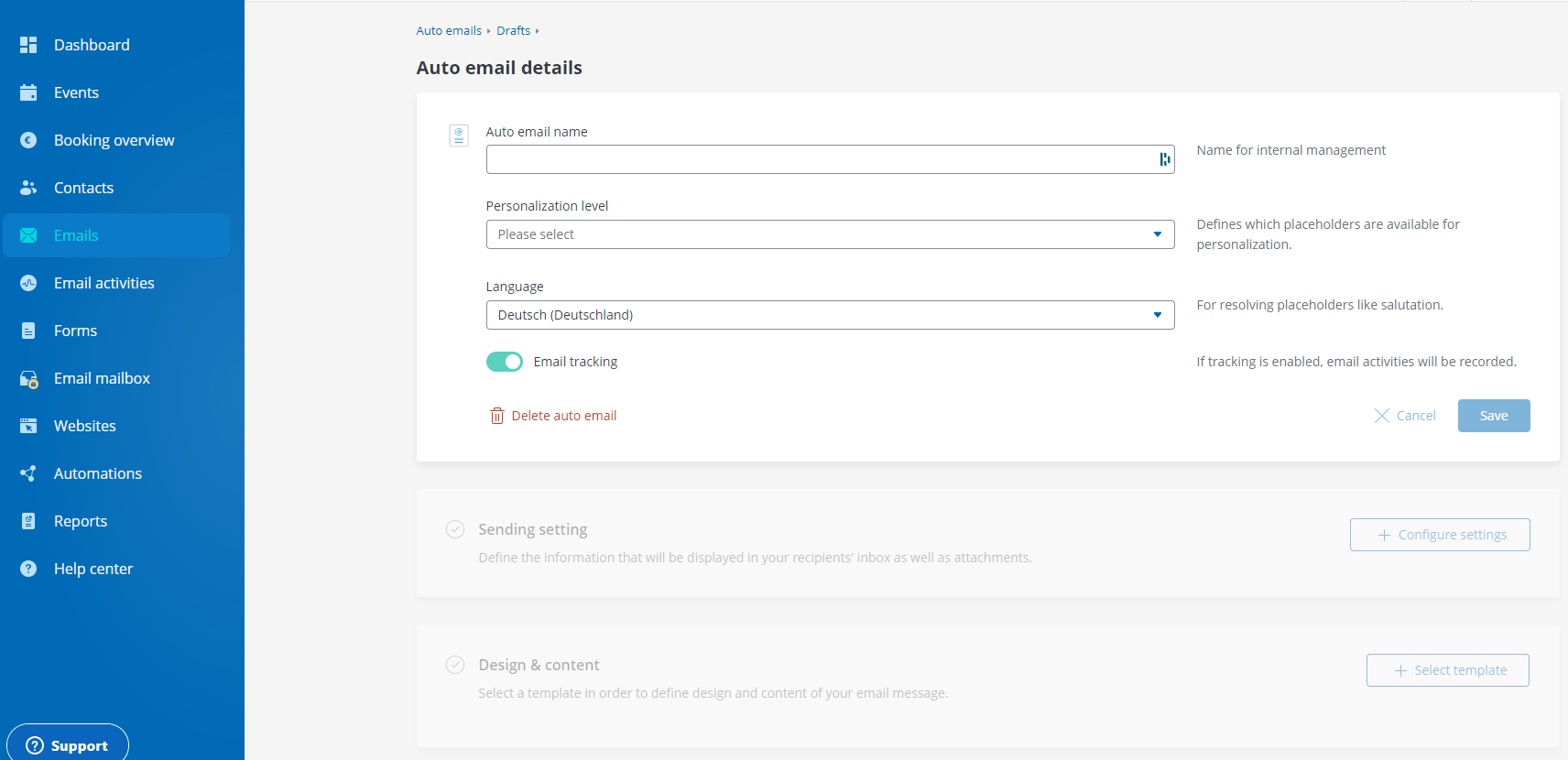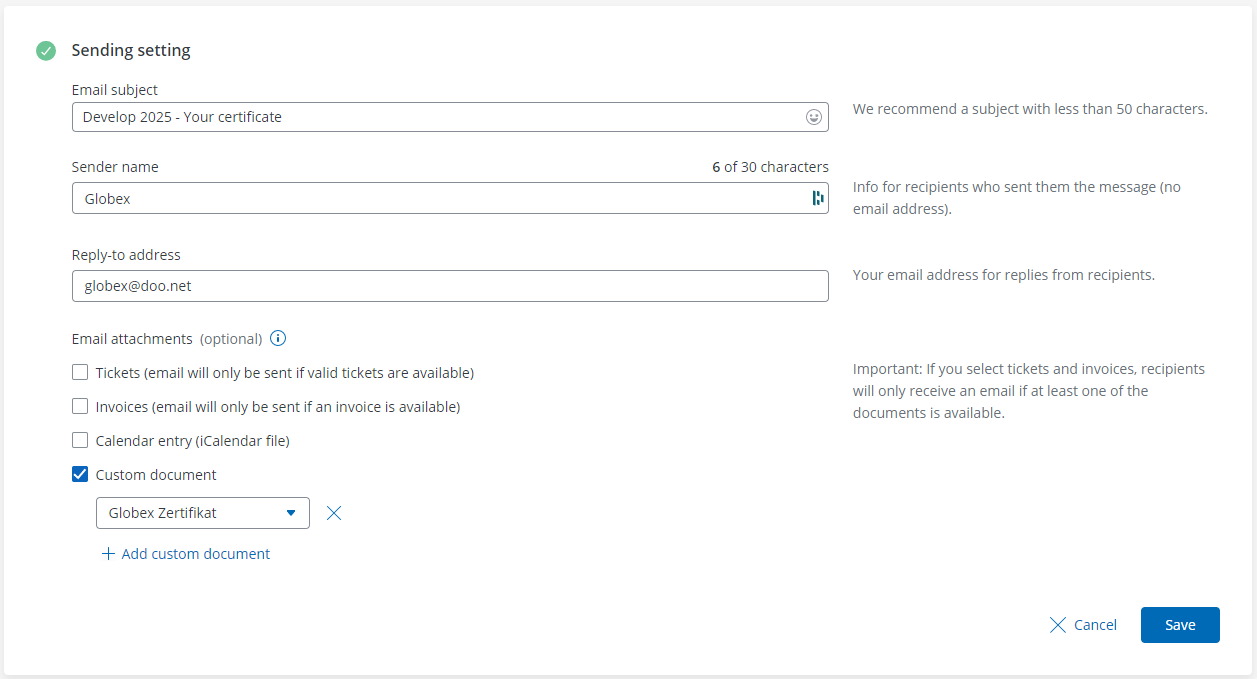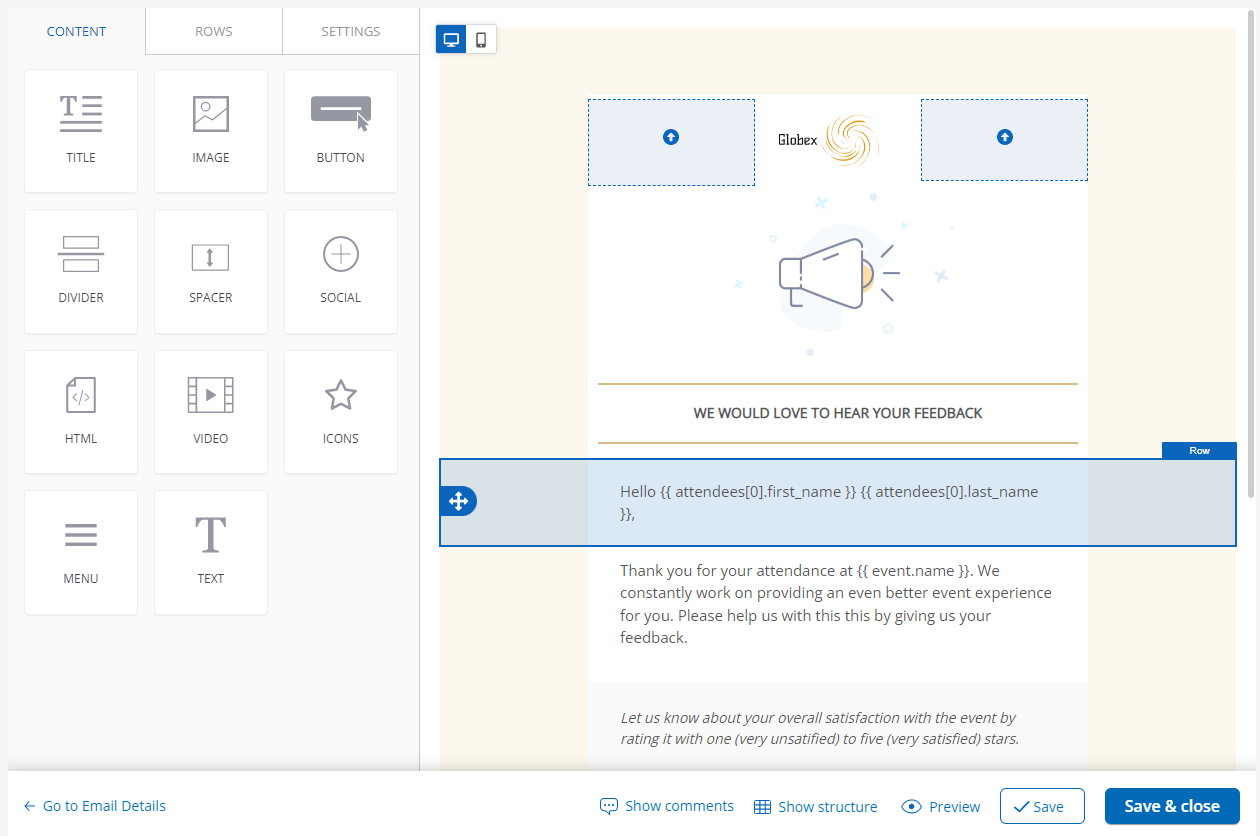-
General information
-
Account Settings
- Creating & managing your personal doo account
- Organization settings: Managing your account settings
- Multi-user: Working as a team
- How to reset your password
- Changing the email address of your doo account
- The doo account packages
- What can I do if a doo site does not load
- Adjusting standard labels and texts of the doo booking process
- How do I delete my account
- Payment Process: How to manage payment options
- Password Security using doo: What options are available?
-
Events
-
- Edit email contents
- Using placeholders in booking email templates
- How to adjust invoice contents
- Attendee tickets and QR code scanning
- What do doo tickets look like?
- E-mail attachments for bookers and attendee
- Certificates & Co: Create custom documents
- Define your own booking conditions
- Revenue Disbursement: Entering and editing invoice address & bank account information
- Create bilingual (multilingual) events
- Bookings with manual approval
- Create a waiting list
- Access codes and promotion codes: Discounted tickets for your participants
- doo Widgets: Integration into your own website
- doo Default Event Website and Custom Event Website
- How to create a booking process in english
- Providing flyers, event programs or direction sketches
- How does the booking process work for my attendees?
- How do I make test bookings?
- Creating exclusive registration access for selected contacts
- Delete ticket categories & change prices and sales periods after go-live
- Cancellation of events
- What are event fields and how do I use them best ?
- Shorten the booking process and prefill data: How to make the booking process as convenient as possible for bookers
- Tips for virtual events with doo
- Integration into your own Facebook page
- Event Templates: Creating templates for your events
-
Manage Bookings
- Manage bookings and attendees
- Monitoring incoming bookings
- The attendee overview
- Invitation list: Track the registration status of specific contacts
- Manual registration
- Resend automatically generated emails
- Rebooking: How to change existing bookings
- Cancellation & Refund Handling
- Booking self-service: Allow bookers to subsequently access and edit their bookings
- Download booking overview and attendee list
- Change of attendee data and invoice address
- Bank transfer: How to deal with pending transactions
- What to do, if someone has not received their confirmation e-mail or ticket
-
Contact Management
- Contacts: Introduction and Topic Overview
- Contact details: Collect cross-event contact information
- Overview contact data fields
- Managing contact data fields
- Creating contacts - How do contacts get into the doo contact center?
- Contact import - Bulk creation and editing of contacts
- Managing existing contacts
- Creating and managing contact groups
- Datamatching & Synchronization of booking data and doo contact
- Email subscriptions: Double opt-in & opt-out options at doo
- Deleting contacts
-
Emails
-
Websites
- The doo website editor: create an individual event page
- Mobile optimization: Customize your site for all your devices
- Installing different tracking tools on the website
- Creating a SSL certificat (HTTPS) to ensure data security
- Website Tracking: How to integrate doo into your Google Analytics To be Created
-
Additional Functions
- Optional Service: Refund handling via doo
- Ticket design: How to get your ticket in the desired design
- Forms - Set up surveys and feedback requests for your attendees
- Embedded Reports
- Customer specific sender emails
- Email inbox: How to manage email requests from your participants within doo
- Add calendar entries to your event communication
- Filtered cross-event widgets: How to show only selected events
- Widgets and Accessibility
-
Automations
-
Booker & Attendee FAQ
-
On-Site and Attendance
Setting up auto emails
1. Use cases for auto emails
With the auto email function you can create templates that should be used for automated sendouts in the future, e.g. whenever a certain action is triggered. This gives you the opportunity to individualize for example your communication towards bookers and attendees (e.g. adding further booking emails, customize event reminders, automating feedback requests after an event has ended) or towards internal or external stakeholders (e.g. inform Accounting about ticket sales or partners about newly registered attendees).
2. Accessing the auto email templates
To access your auto email templates, please select “Emails” in the main menu on the left and switch to the tab “Auto Emails”. Here you will find your draft templates. In order to navigate to the auto emails that are currently live or already archived just click on the corresponding tab.

3. Creating a new template
To create a new template, please click on “+ New auto email”.

You will first need to give it a name and selecte your preferred personalization level, which will define which placeholders will be available for you in the body of the email message.
You can decide between:
- Event
- Contact
- Booking
- Attendee
Afterwards, you need to choose your language (German or English) and decide if you want to enable cross-event activities tracking for this template or not.
After this first step, you can specify the sending settings such as email subject, sender name and reply-to address. You can also choose one or more attachments based on the personalization level that you chose in the first step. For example, if you have chosen to create an auto email on attendee level, you will be able to attach a custom document to your auto email.

The last step “Design & Content” refers to the email body itself. You can create and edit your message with our usual drag & drop email editor, personalize the text by adding merge tags as placeholders and optionally also use liquid code.
The list of available merge tags depends on the personalization level you chose for your template (event, contact, booking or attendee data). In addition to those placeholders, that refer to data that is stored within doo, it is also possible to add api-level placeholders in order to further personalize your email. Just add {{placeholders.KEY1}} to your text and replace “KEY1” with any placeholder name. The value for that placeholder can then later be set in the advanced settings of the “send auto email” module of your automation scenario (see 4.).
After having set all of these details, you will be able to publish your auto email template in order to automate its sendout in the next step with doo Automations. Please note that only live templates can be used for automated sendouts.
If you don’t want to publish your auto email right away you can save it as a draft template – you can then keep editing it at a later point or delete it. After a template has been published, it cannot be deleted anymore, but you can archive it if you don’t need it anymore.
4. Automate sendout of the auto email
After having published your auto email, you will be able to use it when setting up an automation scenario with doo Automations. All information on this feature and how to automate a workflow can be found here.
To integrate an auto email into a scenario, you just need to integrate the doo “Send auto email” module into your workflow, select the respective auto email template from the list and make the desired settings.
